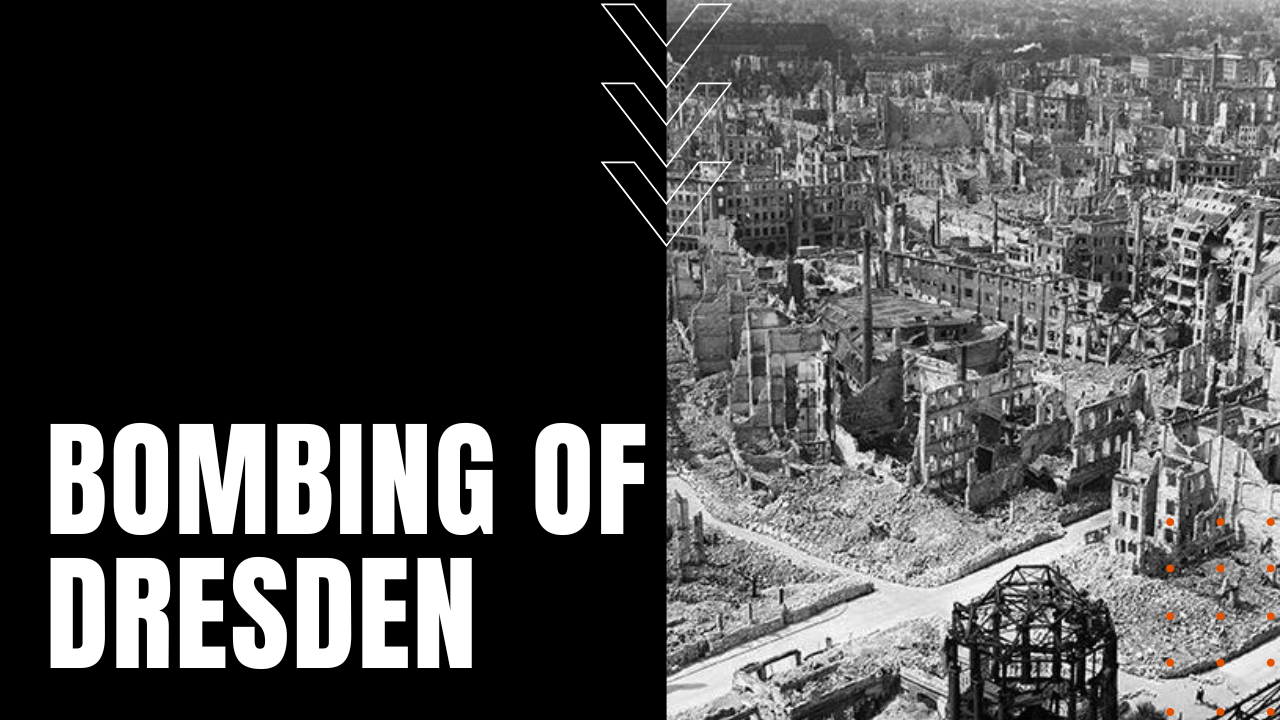Bombing of Dresden

Known as the German Florence on the Elbe, before the Allies’ bombing of Dresden on February 13th, 14th and 15th of 1945, the city was a center of European culture and Baroque splendor, home to famous collections of art, porcelain and scientific institutions. Coming less than a month after 19,000 U.S. troops were killed at Germany’s last-ditch offensive, the Battle of the Bulge, and three weeks after the discovery of Nazi atrocities committed at Auschwitz, Allied war planners chose the city due to its rail and roadway networks, with the additional intent of terrorizing civilian populations throughout Germany, in an effort to force the German’s to at long last sue for peace.
Massive Tonnage Dropped
Destroying greater Dresden in a campaign that witnessed 800 bombers drop some 2,700 tons of explosives and incendiaries over the city, the bombings caused wind-driven firestorm that suck out oxygen as it incinerated buildings and humans alike, at the same time, losing only six bombers after the destruction of the German Luftwaffe and the city’s now ruined anti-aircraft defenses. American prisoners of war were moved two stories underground in a meat packing house as the bombing began, including future author Kurt Vonnegut, whose book Slaughterhouse Five records his experiences during and after the bombing. “Those who have unlearned how to cry, wrote German writer Gerhart Hauptmann, “will learn it afresh on the destruction of Dresden.”
Revised Death Toll
While initial death toll estimates rose as high as 200,000 dead, as Nazi apologist David Irving claimed in his 1963 book, The Destruction of Dresden—a figure long accepted by early war historians. Critics eventually pounced on Irving’s lack of evidence, and his complete refusal to acknowledge the estimated six million people killed in the Holocaust. Years later, Irving gained notoriety as a Holocaust denier, which resulted in his criminal conviction in 2006. In an attempt to silence right-wing ideologues from exploiting the death toll, in 2004, the city of Dresden established a historical commission to produce more precise data using historical, military, forensic and archeological research, publishing revised estimates in 2010 of 22,700 to 25,000 dead, making the bombing of Dresden, one of the last brutal acts of the Second World War.
